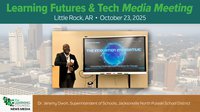The U.S. K–12 school system now commands nearly $880 billion in annual revenue from local, state, and federal sources. But despite the size of this financial base, districts are strapped: the exhaustion of COVID-era relief funds, paired with escalating construction costs, has led to record levels of bond issuance in 2025.
In just the first half of 2025, school bond issuance jumped 35–49% over 2024, with states like Texas, Ohio, California, and New York at the forefront.
The pattern is clear: bonds are filling the gap left by waning federal dollars, but community resistance is growing, and the debt burden raises hard questions about sustainability.
The Hard Data
- Nationally, school districts have issued nearly $45 billion in bonds through mid-2025—up over 35% compared to the same period last year. Bloomberg
- In Michigan, voters approved $199 million in school bonds in a recent August election, though they rejected even more—highlighting growing voter caution amidst economic uncertainty. “This is just really indicative of economic uncertainty for voters, and they’re going to be pretty cautious,” noted Don Wotruba, executive director of the Michigan Association of School Boards. Bridge Michigan
- In Nebraska’s rural districts, bond approval is becoming a tough sell—three bond measures recently failed, marking the ninth failed attempt for school bonds this year alone. Nebraska Public Media
- Garland ISD’s $1.103 billion bond (Prop A) passed in May 2023, aimed at modernizing school facilities and infrastructure. Ballotpedia. As of summer 2025, major projects are advancing: high school Multi-Program Activity Centers (MACs) and a new Freeman Elementary campus have visible construction underway. Garland Independent School District+1. Board update meetings spotlight an array of ongoing enhancements: safety fencing, school renovations, security system upgrades, HVAC updates, playground replacements, and network infrastructure upgrades across dozens of campuses. Garland Independent School District+1
- Midland, MI: A Bond Defeat Triggers Reflection. A massive $285 million bond intended for two new schools and facility upgrades failed, with nearly 68% voting against it. Midland Daily News. Board President Phil Rausch called the outcome “part of a broader process” and vowed to return with proposals better aligned to community priorities. Trustee Meki Craig encouraged more civic feedback, pointing to transparency and relevance as keys to future success. Midland Daily News
- San Antonio ISD (SAISD) has launched a 24-member panel to assess facility needs ahead of a potential 2026 bond—aimed at rejuvenating aging campuses and addressing enrollment declines. One official noted many campuses are now 63 years old—well beyond their intended lifespan. San Antonio Express-News
Signs of a Shift Toward Restructuring?
Community pushback is triggering reevaluation. Midland’s rejection and SAISD’s forward planning hint at districts listening more closely to voters. Transparency also matters: Michigan board members in Reed City, after a failed $88 million bond, revived a leaner $75.5 million proposal—this time focused on clarity and including a public feedback tool ("ThoughtExchange"). Big Rapids Pioneer
Alternative strategies are also gaining traction. Minnetonka (MN) proposed an $85 million referendum structured to avoid net tax increases—by restructuring old debt and raising new funds. Superintendent David Law stressed: “residents would not experience an increase in their property tax obligation.”
When Does Indebtedness End?
Districts are hitting a wall. Failed referendums show the limits of taxpayer appetite for continual borrowing. At the same time, deferred maintenance, enrollment shifts, and stagnant per-pupil funding keep costs rising.
The result: school systems can either continue compounding debt—or begin structural reforms toward efficiency.
The Potential to Shift From Bonds to AI-Enabled Models
New frameworks for schooling are emerging led by the Omni-AI Alliance. They point toward a different kind of restructuring—less tied to physical factory-style plant expansion and more oriented toward AI-enabled instructional models:
| Emergent Model | How It Counters Debt Dependency |
|---|---|
| Matrix Fractional Schooling | Modular staffing and AI-infused resources reduce cost and reliance on large-scale facilities. A matrix of extended geo-distance teaching is layered in. |
| Co-Pilot Schooling | Emotionally intelligent AI co-pilots handle personalization, reducing the need for expensive small-group staffing ratios while allowing for maximizing achievement through master teacher/apprentice modeling. |
| PathFlex Schooling | Time AI dynamically organizes cohorts, minimizing idle facility use and teacher inefficiencies while wrapping in on-demand tutoring and gig teaching. |
| Lounge/Satellite Schooling | Learning hubs in retail or community spaces cut the need for large campus construction and give a feel of homeschooling. |
| A La Carte Limitless | Omni-AI systems integrate all approaches, allowing districts and families to mix-and-match learning pathways without each district building all infrastructure. |
Why the AI Models Now?
- Cost Pressure: With nearly $1 trillion already flowing into K–12, communities are balking at new tax hikes. AI-enabled flexibility offers a path to stretch dollars.
- Teacher Shortages: AI augmentation addresses personalization gaps that bonds alone can’t fix.
- Facility Overhang: Many districts face declining enrollment; new buildings may be unnecessary, while AI-based schooling reallocates learning into flexible environments.
- Equity & Choice: PathFlex and Lounge models mirror trends in school choice and vouchers, letting families access customized education without massive public debt.
Outlook
Short-term (1–3 years): Bond activity continues, but voters scrutinize more closely; some communities pivot to smaller, phased projects.
Medium-term (3–7 years): Districts facing repeated bond failures experiment with hybrid models—fractional staffing, retail learning spaces, AI pacing engines.
Long-term (7+ years): AI-based schooling ecosystems mature, reducing dependence on large debt-financed campuses. The national conversation shifts from “how big a bond?” to “how fast can we restructure?”
Bottom Line
The K–12 sector’s debt spiral can’t continue indefinitely. The future is likely a dual path: bonds for critical infrastructure, paired with AI-driven schooling models that decouple learning quality from costly, debt-heavy structures. The pivot from “bond-first” to “AI-first” may be the most sustainable reform of the coming decade.











